About Plan
Understanding your pain regions and targeted treatment approach
Pain Region
📋 Take our assessment to get your specific pain regions identified
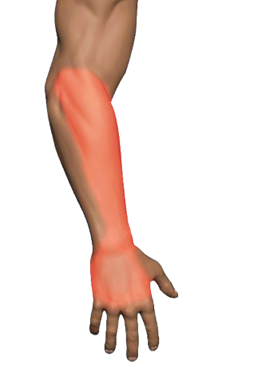

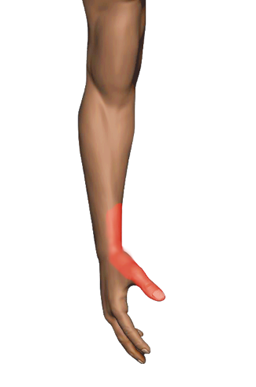
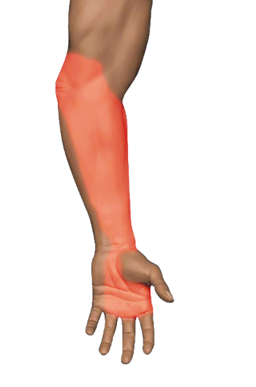
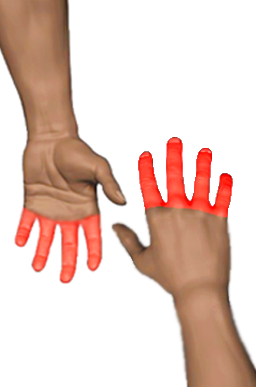
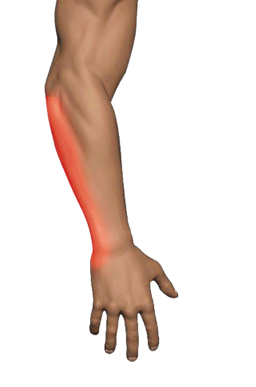
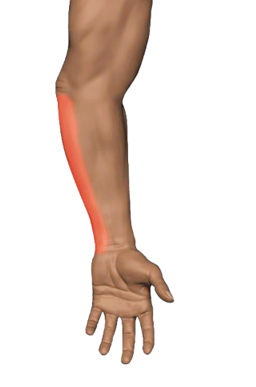
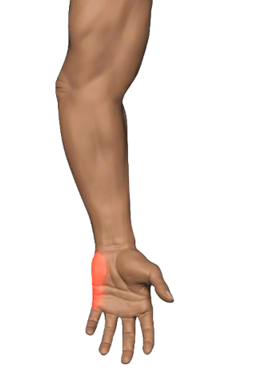
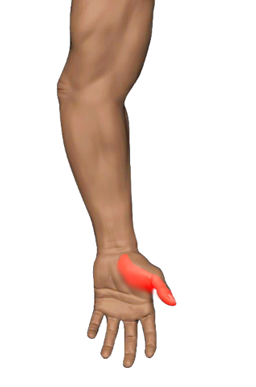
Wrist / Hand Extensors
This is one of the most commonly reported pain patterns with desk work, typing, gaming or any repetitive activity. This area is commonly injured due to the stress and strain put on the wrist & finger extensors. This typically is irritation of just one or multiple tendons that cross the wrist and leads to the tips of the fingers. These muscles/tendons are responsible for lifting up the finger and wrist each time a new button is pressed or action is completed. Whether that is clicking the mouse/keyboard, using your finger to hit a controller trigger, or tapping something on a mobile device.
More about this issue: Extensor tendinopathy is a condition that affects one or multiple tendons stemming from the muscles in your forearm, wrist, and fingers. Tendons are like little ropes that connect your muscles to your bones, and they help you move specific joints. When you use your wrist and fingers a lot, these tendons can get irritated and swollen, causing pain.
Common things you might feel? With this problem you are likely to begin experiencing pain and discomfort while using your wrist & hands with your activity and a sore, achey, or stiff feeling after in the area indicated above. Weakness is also likely to be present with gripping and using your hands (moving the mouse or typing).
What Structures Are Involved
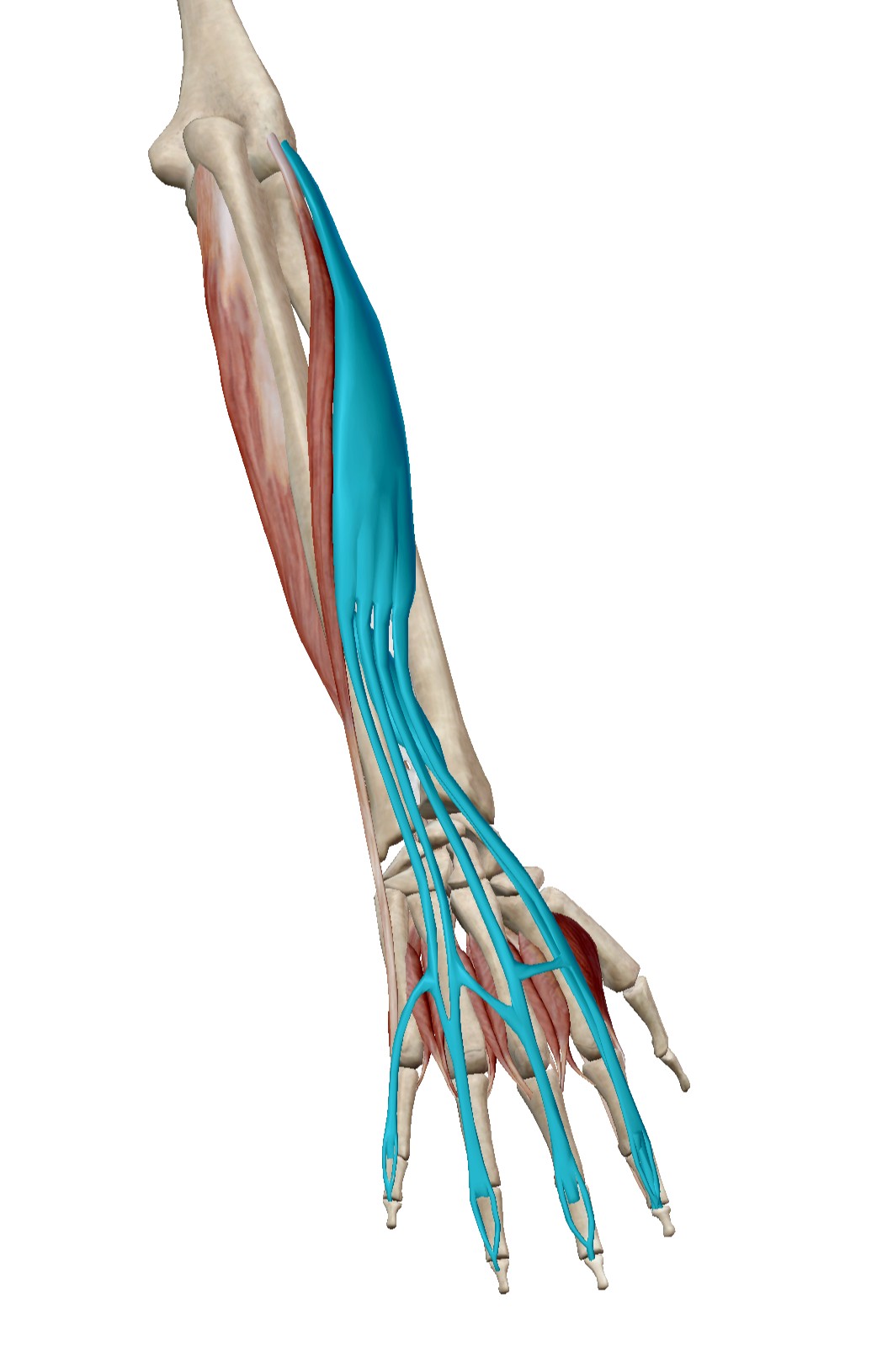
Extensor Digitorum
Tendon & Muscle
Muscle Actions: Wrist Extension, Finger Extension

Wrist extension

Hand digits 2-5 extension
How does this happen to you?
We may not realize how often we use your hands with our work and hobby-related activities. The longer duration we use our hands for, the more we are at risk for tissue irritation. If we do not have the capacity (endurance) to handle the repetitive movements over long periods of time then we irritate tissues and feel pain.
Load = How much you are using your hands throughout the day
Capacity = Endurance of the muscle & tendon tissue
This means there are two ways to address RSI:
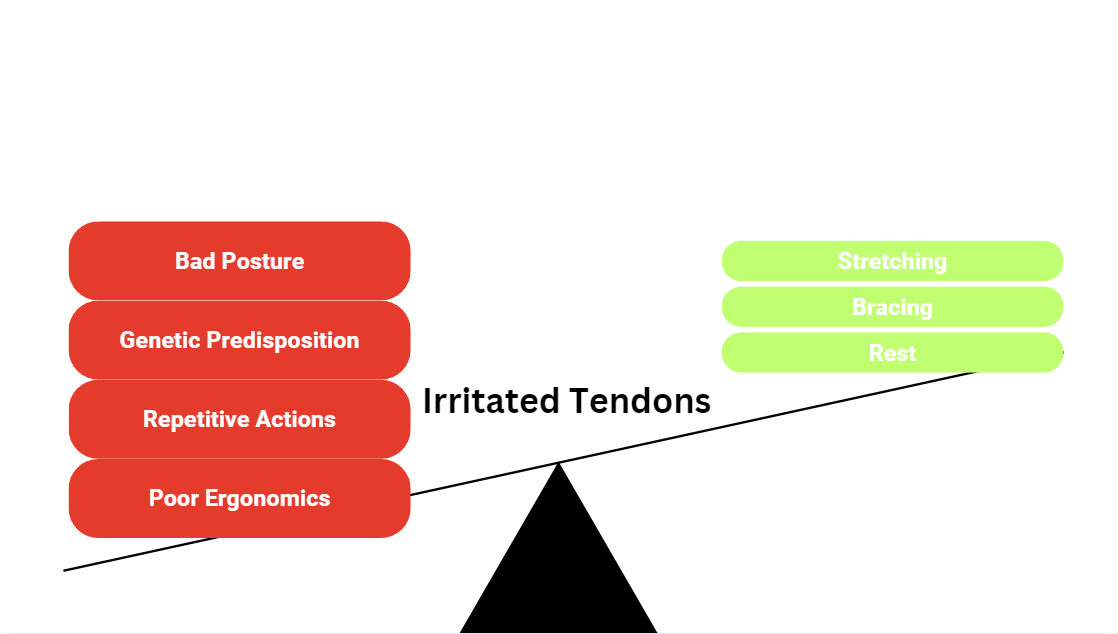
Irritated tendons when load exceeds endurance
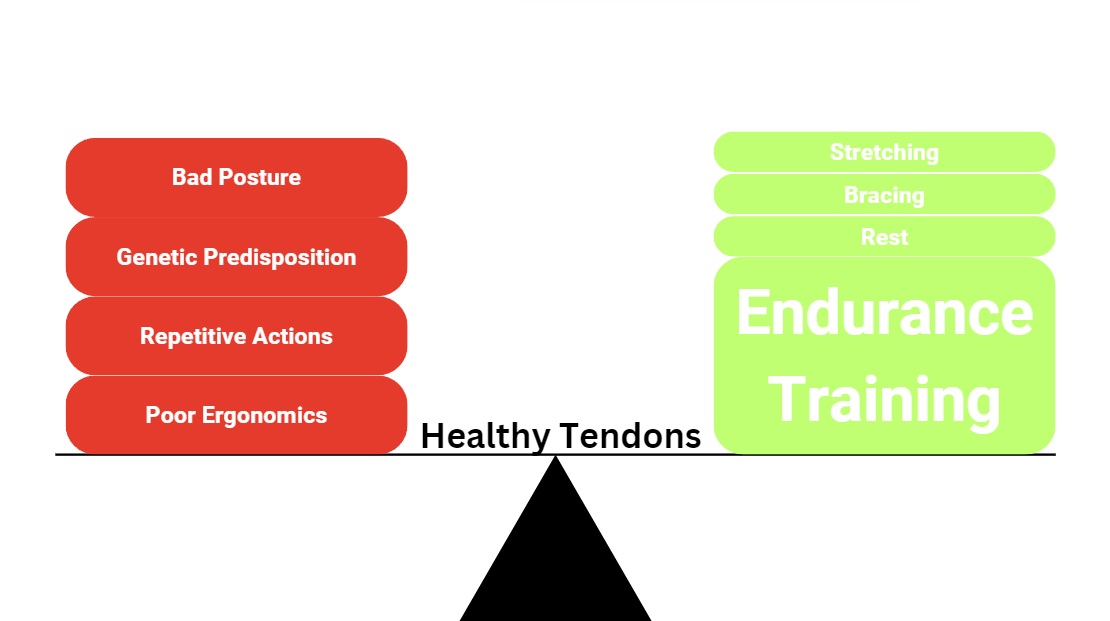
Healthy tendons when endurance balances load
1. Reduce Load
Changing ergonomics, peripherals, or reducing activity time. This approach is often temporary – pain typically returns when you resume your normal workload.
2. Increase Endurance
Building tissue capacity through specific exercises allows you to handle higher volumes of activity. This approach addresses the root cause for long-term relief.
How do we fix it?
Returning from this injury requires building up strength & endurance in the wrist & hand directly. This will take time as it takes roughly 4-6 weeks of consistent work to make a change in your muscular endurance. Tendon adaptations typically occur at around the 8 week mark. But this does not mean it will take 8 weeks to notice some positive changes. After 2-3 weeks nervous system changes can occur which may improve your symptoms.
The free version of the Troubleshooter is designed to focus on the deficits we have seen historically lead to these issues in the first place. However dealing with an injury is often more complicated than just your tissues capacity. We have to consider other potential contributors like posture, ergonomics, activities, lifestyles, beliefs and more. You can learn more about these factors and the science of pain within the education tab.
Our Approach Focus Areas
Improving tissue capacity to handle higher volume of repetitive actions through specific loading protocols that stimulate tendon remodeling and muscle fiber recruitment.
Training your brain to recruit more muscle fibers more efficiently, reducing stress on individual fibers and preventing overload through improved motor control patterns.
Gradually increasing exercise difficulty and intensity to build tolerance safely without triggering flare-ups, allowing tissues to adapt and strengthen over time.
Optimizing rest periods between activity and exercise to allow for tissue repair and adaptation, while avoiding both underloading and overloading your structures.
Impairments Dashboard
📊 Sample impairment analysis - get yours with assessment
Muscle Length
Findings (Mock Data):
- Wrist Flexor Mobility Mildly Limited
- Wrist Extensor Mobility Normal
Suggested Focus: Stretching Routine
Endurance
Test Results (Mock):
- Wrist Flexor Endurance: 35 reps
- Wrist Extensor Endurance: 28 reps
Suggested Focus: Strength Training
Neural Tension
Nerve Tests (Mock):
- Median Nerve: Mild Tension
- Radial Nerve: Normal
Suggested Focus: Neural Mobilization
Ready for Your Personalized Analysis?
Start your free trial to take our comprehensive assessment of your specific pain regions, impairments, and get your targeted treatment plan customized just for you.
Start Your Free Trial →